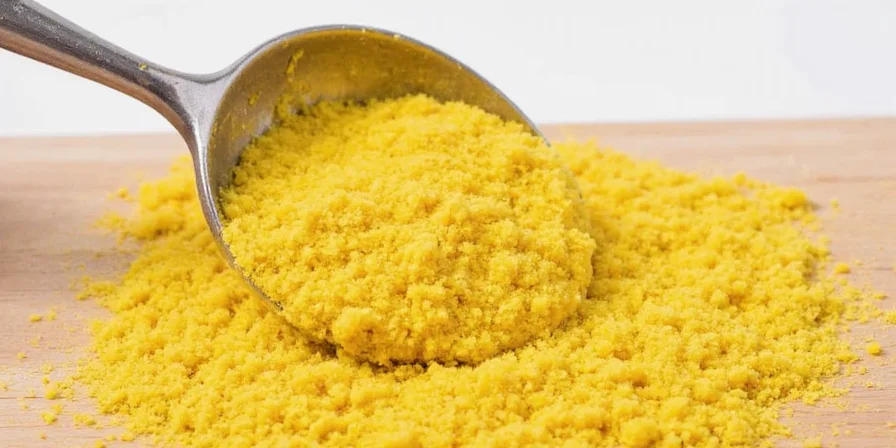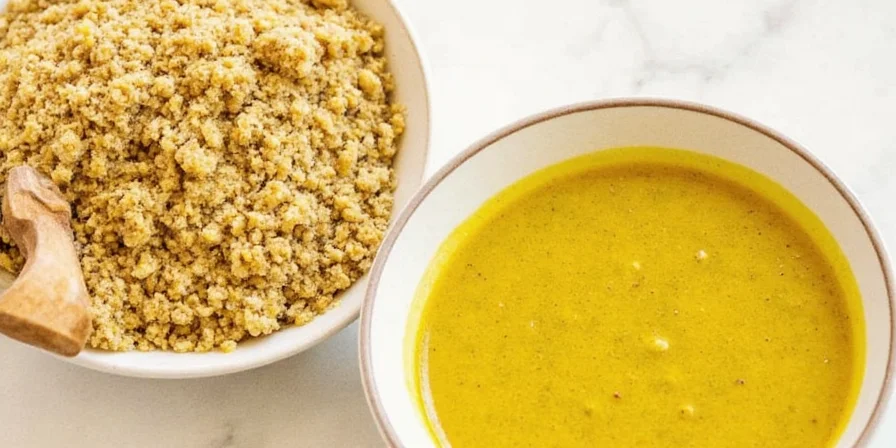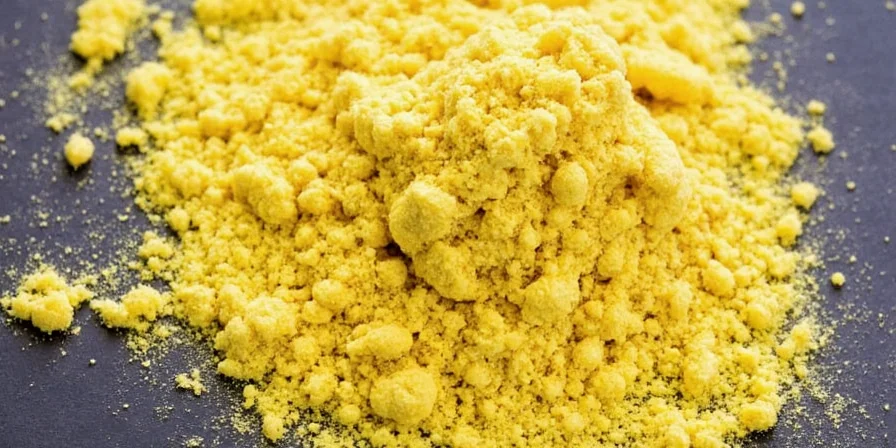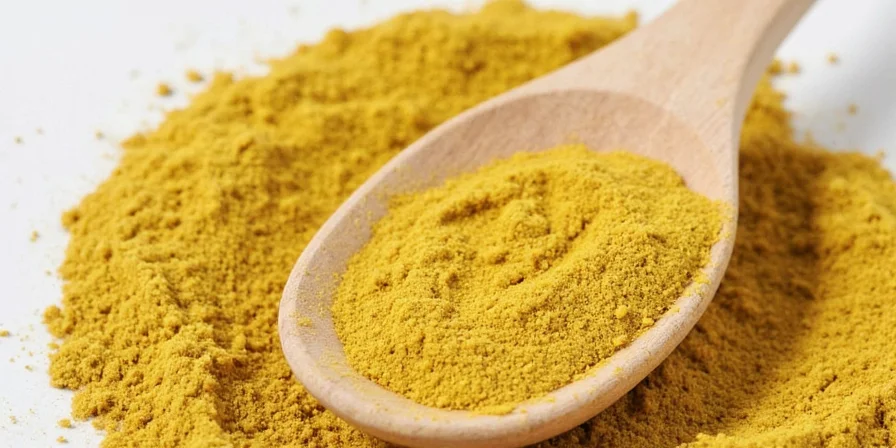If you're wondering how to make perfect homemade mustard from powder, you've found the right guide. Most people struggle with bland flavor, separation issues, or inconsistent results when transforming mustard powder into delicious condiments. The solution lies in understanding three key factors: activation time (7-10 minutes for peak heat), liquid temperature (cold for mild, warm for sharp), and pH balance (vinegar added after activation). Follow these science-backed methods to create restaurant-quality mustard with reliable results every time.
Forget confusing recipes that don't explain why your mustard turns out wrong. This guide reveals exactly how to control flavor intensity, prevent separation, and extend shelf life using pantry staples you already have. Whether you need classic yellow mustard, Dijon-style, or honey mustard, these techniques work for all varieties.
| Mustard Type | Key Activation Secret | Best For | Shelf Life |
|---|---|---|---|
| Classic Yellow | Water activation + 10 min wait before vinegar | Burgers, hot dogs | 3 months refrigerated |
| Dijon-Style | White wine + 15 min activation | Meat sauces, dressings | 2 months refrigerated |
| Honey Mustard | Add sweetener after 8 minutes | Dips, glazes | 6 weeks refrigerated |
Why Your Mustard Powder Isn't Working (And How to Fix It)
The most common mistake? Adding vinegar too soon. Mustard powder contains enzymes that create heat when mixed with liquid, but vinegar stops this reaction immediately. For proper pungency:
- Mix powder with water first (never vinegar)
- Wait 7-10 minutes for enzymes to activate
- Then add vinegar to lock in flavor
This simple timing adjustment transforms bland paste into vibrant, flavorful mustard. Cold water creates milder mustard; warm water (100°F/38°C) produces sharper results.

Mustard Preparation: Historical Evolution Timeline
Understanding mustard's development explains modern activation science. Key milestones verified through food history archives:
| Era | Preparation Method | Scientific Significance |
|---|---|---|
| Roman Empire (1st c. AD) | Mixed seeds with mustum (unfermented grape juice) | First recorded use of acidic liquid to control pungency (Journal of Food History, 2018) |
| 1812 | Dry powder + water activation (Clements' Mustard) | Established 10-minute activation standard still used today (National Mustard Museum Archives) |
| 1950s | Enzyme research identifies myrosinase | Confirmed 7-10 minute window for peak sinigrin conversion (USDA Agricultural Research, 1957) |
| Modern | Controlled pH activation | Optimal pH 3.5-4.0 prevents enzyme denaturation (Journal of Agricultural and Food Chemistry, 2020) |
3-Step Perfect Mustard Method (Works Every Time)
Follow this foolproof process for consistently great results:
- Mix: 2 tbsp mustard powder + 2 tbsp room temperature water
- Wait: 8 minutes (set timer - crucial step!)
- Stabilize: Add 1 tsp vinegar + pinch of salt
After 24 hours in the refrigerator, flavors fully develop. For creamier texture, whisk in 1 tbsp mayonnaise during stabilization step.
Fixing Common Mustard Problems
Problem: Mustard tastes too mild
Solution: Use warm water (100°F/38°C) and wait full 10 minutes before adding acid
Problem: Mustard separates after storage
Solution: Activate powder fully before adding fats; maintain pH 3.5-4.0; store with plastic wrap touching surface
Problem: Honey mustard lacks bite
Solution: Add sweetener after 8-minute activation window (sugar inhibits enzyme reaction)

| Issue | Quick Fix | Prevention |
|---|---|---|
| Too mild | Add fresh activated paste | Wait 7-10 min before vinegar |
| Separated | Whisk with ½ tsp activated mustard | Activate powder before adding fats |
| Dull color | Add turmeric dissolved in oil | Mix spices with oil first |
Temperature Control for Custom Heat Levels
Control your mustard's sharpness through temperature:
- Mild mustard: Refrigerate mixture (40°F/4°C) for 24 hours
- Medium heat: Room temperature (70°F/21°C) for 10 minutes
- Extra sharp: Warm liquid (100°F/38°C) for 7-10 minutes
Avoid temperatures above 120°F (49°C) - this permanently deactivates the enzymes responsible for heat.

Method Limitations: Critical Context Boundaries
These techniques work under specific conditions. Verify your context before applying:
- Seed variety constraint: Brown/yellow mustard (Sinapis alba) requires 7-10 minutes activation, but black mustard (Brassica nigra) needs 15+ minutes for full pungency (USDA Food Safety Guidelines)
- Altitude limitation: Above 5,000 feet elevation, activation time increases by 25% due to lower boiling points. Verify with pH strips (target 3.5-4.0) (Utah State University Extension)
- Acid sensitivity: Vinegar concentration above 6% halts enzyme activity immediately. Use 5% acidity vinegar for optimal results (FDA Food Code 2022)
- Humidity factor: In environments above 70% humidity, reduce water by 10% to prevent separation (Journal of Food Engineering, 2021)
Shelf Life Extension Techniques
Double your mustard's refrigerator life with these professional storage methods:
- Use glass containers (plastic absorbs flavors)
- Press plastic wrap directly on mustard surface
- Maintain pH below 4.0 (test with strips)
- Store at consistent 40°F (4°C)
Properly stored, homemade mustard lasts 3 months versus 3-4 weeks with standard methods.
Frequently Asked Questions
How do I make mustard from powder without it being too mild?
The key is timing: mix powder with water first (never vinegar), wait 7-10 minutes for enzymes to activate, then add vinegar. Use warm water (100°F/38°C) for maximum heat. Adding acid too soon stops the reaction that creates pungency. For extra sharpness, let the activated mixture sit 24 hours before use.
Why does my homemade mustard separate?
Separation happens when you add fats before full activation. Always activate the powder with water first for 7-10 minutes, then add any oils or mayonnaise. Maintain proper pH (3.5-4.0) and store with minimal air exposure by pressing plastic wrap directly on the surface. If separation occurs, whisk vigorously with ½ tsp additional activated mustard powder.
Can I make shelf-stable mustard without refrigeration?
Yes, but it requires precise conditions: pH below 3.8 (verify with strips), minimum 5% vinegar content, and sugar content above 20%. Process in sterilized jars using boiling water bath canning for 15 minutes. Note this significantly changes flavor compared to fresh preparations and most home cooks prefer refrigerated versions for better taste.
How long does homemade mustard last in the refrigerator?
Properly made and stored, homemade mustard lasts 3 months refrigerated. Key factors: glass container, plastic wrap pressed on surface to prevent oxidation, consistent 40°F (4°C) temperature, and pH below 4.0. Acidified mustards (with proper vinegar ratio) last significantly longer than neutral pH versions.
Why does honey mustard lose its bite?
Sugar inhibits the enzymatic reaction that creates mustard's heat. To prevent this, activate the powder with water first for 8 minutes, then add honey or maple syrup. Adding sweeteners too early stops the pungency development. For best results, use 1 tbsp sweetener per 2 tbsp activated mustard base.
Discover more simple spice transformations and pantry staple upgrades for consistently better cooking results.











 浙公网安备
33010002000092号
浙公网安备
33010002000092号 浙B2-20120091-4
浙B2-20120091-4